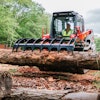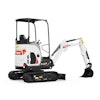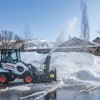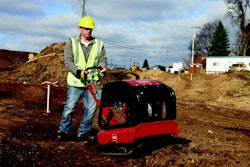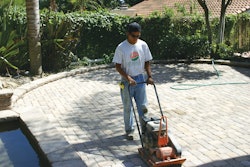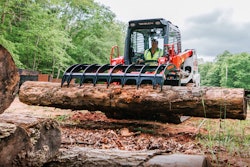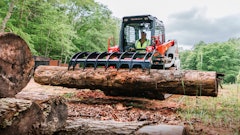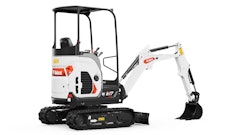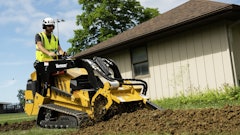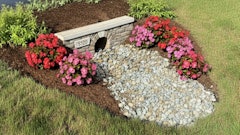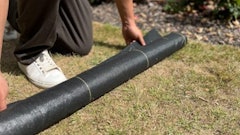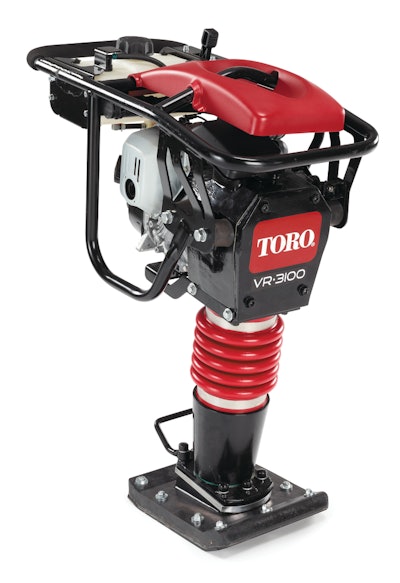
Both compactors and rammers are used to flatten and reduce air in a project’s surface and sub-base. Compactors are definitely the most applicable and productive for most of the hardscaping work you're doing. But rammers also fill an important need from time to time.
"Rammers, handheld machines that jump and compact soil with a shoe, are secondary to forward plate compactors, but are useful in those hard-to-reach areas," says Stevan Garcia, compaction product manager for Multiquip. Rammers also come in handy if there are any obstacles on a jobsite that make it difficult to complete a particular application. "If you have a manhole or fence, which makes for a confined area, a rammer would be the only option because of its smaller size and operating flexibility."
"In landscaping projects, a rammer is often used to get into tighter project areas that require a narrower footprint and deep soil compaction, such as footings, trenches and repair projects," adds Anna Foster, rental product marketing manager at The Toro Company. "Their size and force are great for maneuvering in tight spaces such as around drainage, or along existing foundations or other structures such as a pool or water feature."
Rammers will typically range from 6- to 15-inch shoe widths, which is your working width. Foster says three other specs are also very important to look at:
- Impact Force – how hard it's ramming into the ground
- Amplitude – how high it's jumping before ramming into the ground
- Lift – how deep of a sub-base you can compact
Foster says these three specs in combination with one another help paint a picture of how productive a given rammer is going to be. Toro's rammers range from 2,600 to 3,500 pounds of impact force, 2.5- to 4-inch amplitude, and 22- to 25-inch lift.
Other things to evaluate
Weight. You want a machine that's heavy and durable, but not too burdensome to handle. "Eight pounds can make a big difference because operators are manhandling these machines all day long," Foster points out.
Shoe kits. Sometimes you need to go really narrow. Shoe kits that let you go down to 4 to 6 inches can be useful.
Durability. Well-designed rammers have high-impact poly shoes with a steel base plate for reinforcement.
Protection. Protective guarding can help prevent damage during transport.
Well-balanced. A unit designed for stability has almost no movement in the top half of the rammer for better control and handling.
Versatile. It's helpful to have the ability to handle the unit from all sides. Even though the rammer is generally propelling forward, operators will often be muscling a rammer from all angles when they’re maneuvering it in a trench or on a slight slope.
Foster says she doesn't see too many landscape contractors owning rammers. But that doesn't mean landscapers don't have a need. When they do, renting is a good option.

